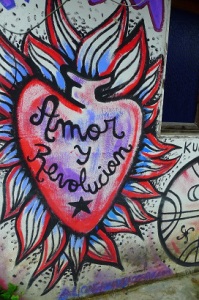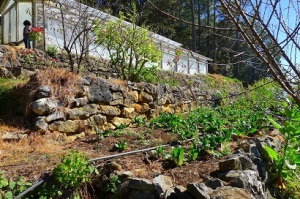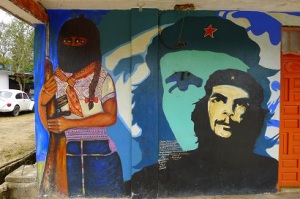Just yesterday we moved into our modest “casita” east of Oaxaca’s central district in a neighborhood relatively untouched by international visitors. There is a garden full of fruit trees and the children have already harvested a bushel of oranges and squeezed generous glasses of fresh juice. The silk trapeze is hung from a sturdy tree, Emet’s Legos are set up, and Neshima just tuned her travel harp. While returning from laundry and the food market, we were invited to join our neighbor Juli for a block party in honor of Three Kings Day. There is a special cake called rosca that has plastic baby Jesus dolls baked into it – getting one is good luck. Emet got three. Tomorrow our routine begins, with the children and Jonah at Vinigulaza Spanish Language School and Leah at Universidad Regional Sureste exchanging knowledge with other educators.
U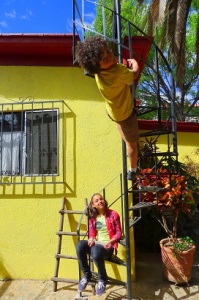 ntil today it has been a whirlwind of movement and expansion. We spent a week in San Cristobal, Chiapas attending the Festival de Las Resistencias y Rebeldes Contra El Capitalismo, put on by the Zapatistas and the National Indigenous Congress. Our first day in attendance was held in Oventik, an hour ride into the misty mountains outside of San Cristobal. Oventik is an autonomous indigenous community that operates independent of the Mexican government. As we took pictures outside the gates of Oventik, Zapatista comrades snapped photos of us right back. After we entered the community we were asked to not take photos of people. It was astounding and humbling to see how the community fed, housed, and transported the thousands of attendees and their incredible permanent infrastructure for health and education, with the school at the center of the village. Every wall of every building covered with brilliant murals that lit the air like the sunshine hiding behind the misty mountain fog. We had a couple of tender and beautiful conversations with the farmers there. Most speak indigenous languages primarily, and so we shared a tentativeness with Spanish that made mutual understanding much easier. We found that we shared a common understanding that the earth is sacred, and specifically that “maize has a heart and soul.”
ntil today it has been a whirlwind of movement and expansion. We spent a week in San Cristobal, Chiapas attending the Festival de Las Resistencias y Rebeldes Contra El Capitalismo, put on by the Zapatistas and the National Indigenous Congress. Our first day in attendance was held in Oventik, an hour ride into the misty mountains outside of San Cristobal. Oventik is an autonomous indigenous community that operates independent of the Mexican government. As we took pictures outside the gates of Oventik, Zapatista comrades snapped photos of us right back. After we entered the community we were asked to not take photos of people. It was astounding and humbling to see how the community fed, housed, and transported the thousands of attendees and their incredible permanent infrastructure for health and education, with the school at the center of the village. Every wall of every building covered with brilliant murals that lit the air like the sunshine hiding behind the misty mountain fog. We had a couple of tender and beautiful conversations with the farmers there. Most speak indigenous languages primarily, and so we shared a tentativeness with Spanish that made mutual understanding much easier. We found that we shared a common understanding that the earth is sacred, and specifically that “maize has a heart and soul.”
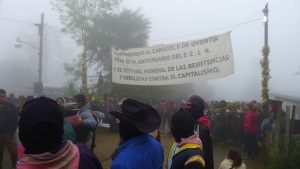 The remainder of our time at the conference was spent at CIDECI UniTierra – “University of the Earth,” an impressive campus with natural buildings, greenhouses, and steeply terraced demonstration gardens. It was the first time we were able to take off our shoes and connect our feet with soil. The conference coordinators reported out that there were over 4000 registered from 49 countries, all in the struggle for sustainability and justice. The guests of honor were the parents and siblings of the 43 disappeared Ayozinapa students from Iguala. Their disappearance and murders were not apolitical, rather a targeted crime against indigenous sovereignty. As the parents prepared to leave, the thousands of attendees stood and counted in unison from 1 to 43, fists raised and then chanted, “You are not alone! The struggle lives!” Incredibly powerful and heartbreaking. It was the birthday of one of the children who is missing and the father broke down in tears along with all the rest of us.
The remainder of our time at the conference was spent at CIDECI UniTierra – “University of the Earth,” an impressive campus with natural buildings, greenhouses, and steeply terraced demonstration gardens. It was the first time we were able to take off our shoes and connect our feet with soil. The conference coordinators reported out that there were over 4000 registered from 49 countries, all in the struggle for sustainability and justice. The guests of honor were the parents and siblings of the 43 disappeared Ayozinapa students from Iguala. Their disappearance and murders were not apolitical, rather a targeted crime against indigenous sovereignty. As the parents prepared to leave, the thousands of attendees stood and counted in unison from 1 to 43, fists raised and then chanted, “You are not alone! The struggle lives!” Incredibly powerful and heartbreaking. It was the birthday of one of the children who is missing and the father broke down in tears along with all the rest of us.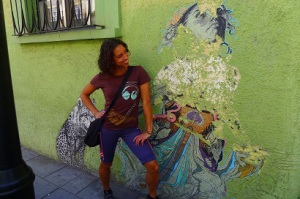
Our last night in Chiapas we wer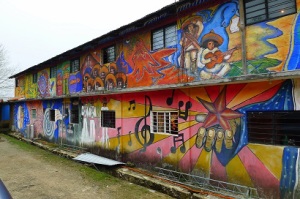 e blessed to be the house guests of Charlotte Saenz of Other Worlds Are Possible and her colleagues, Targol and Ali. While the great food and belly laughs were the highlight, we also learned so much from Charlotte applicable to our research – the folks in Oaxaca with whom we should connect, the newspapers we should be reading, and the rural communities that make sense to visit. For example, there is an elder named Dona Sofia in the town of Teotitlan del Valle who holds her people’s plant medicine wisdom as well as a Triqui indigenous community that has managed to create a “green oasis” in the middle of an otherwise eroded and overgrazed desert landscape. This is the best homework we have ever had!
e blessed to be the house guests of Charlotte Saenz of Other Worlds Are Possible and her colleagues, Targol and Ali. While the great food and belly laughs were the highlight, we also learned so much from Charlotte applicable to our research – the folks in Oaxaca with whom we should connect, the newspapers we should be reading, and the rural communities that make sense to visit. For example, there is an elder named Dona Sofia in the town of Teotitlan del Valle who holds her people’s plant medicine wisdom as well as a Triqui indigenous community that has managed to create a “green oasis” in the middle of an otherwise eroded and overgrazed desert landscape. This is the best homework we have ever had!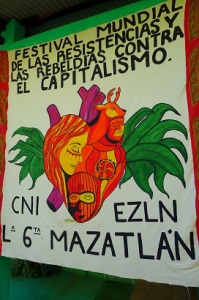
We have taken time to connect with this new land as well. We made on offering of seeds, earth, and herbs from our farm and stated our intentions, asked for Her blessings. In Chiapas, we visited the Cañon de Sumadero National Park and were struck by how water both carves and creates – 200 meter sheer cliff face and elegant, shell-shaped outcroppings. We also spent time at the Museum of Mayan Traditional Medicine in San Cristobal, and the Ethnobotanical Garden of Oaxaca. We have folders of notes and photos that will be incorporated into the curriculum that Leah is creating as part of the Fulbright. The landscape here varies from lush tropical forest to dry dessert. Emet remarks, “Nature can make so many colors!”
Jonah has been in heaven with the markets and the street art, both in Oaxaca and San Cristobal. On one of our first days, we were exploring the streets and checking out language schools when we saw a faded life-size print of Leah’s sister, Naima, on a wall. The artist Swoon installed this work years ago. Naima comments, “Thank you Swoon for giving me super powers to teleport to Oaxaca and give ya’ll love!” Naima, you ARE our angel. Jonah has been reverently capturing the murals and street art which speak to the struggles for political freedom of the people of this land. The public school teachers and those in solidarity have taken to creating much of this art. They are currently on strike and have set up an encampment in Oaxaca’s central square, protesting governm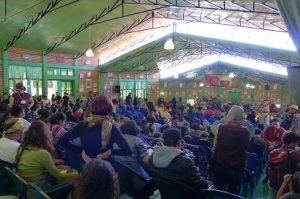 ent involvement in the disappearance of the Ayotzinapa students and generally corrupt policies undermining education and equity. This encampment might resemble that of an Occupy camp, until you read further into it, and realize that these teachers are part of a 20 year history of resistance, manifested in these protests and strikes. The markets themselves are resistance art, from the farmers with myriad varieties of peppers and beans from their land to the women’s textile cooperatives to the detail with which food is prepared. We did not realize how many ways
ent involvement in the disappearance of the Ayotzinapa students and generally corrupt policies undermining education and equity. This encampment might resemble that of an Occupy camp, until you read further into it, and realize that these teachers are part of a 20 year history of resistance, manifested in these protests and strikes. The markets themselves are resistance art, from the farmers with myriad varieties of peppers and beans from their land to the women’s textile cooperatives to the detail with which food is prepared. We did not realize how many ways 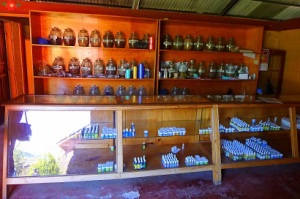 there are to eat sacred maize – fried (tostado), griddle heated (memela), as a drink (champurrado & pozol), puffed (chicharin), boiled (tamale), in soup (esquite), on the cob (etole), and the many ways we are yet to discover. As we discover maize, we discover the heart and soul of this land.
there are to eat sacred maize – fried (tostado), griddle heated (memela), as a drink (champurrado & pozol), puffed (chicharin), boiled (tamale), in soup (esquite), on the cob (etole), and the many ways we are yet to discover. As we discover maize, we discover the heart and soul of this land.
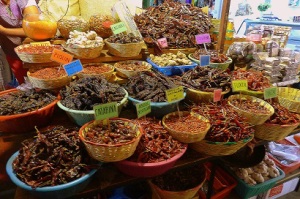
A big shout out to Andrew Lyne, Vicki Kereszi, Nonna Liz, Abby Lublin, and Dan Lyles who are holding down the homestead and farm details so competently while we are away. More Love Notes soon too come. Stay warm, dear ones!

